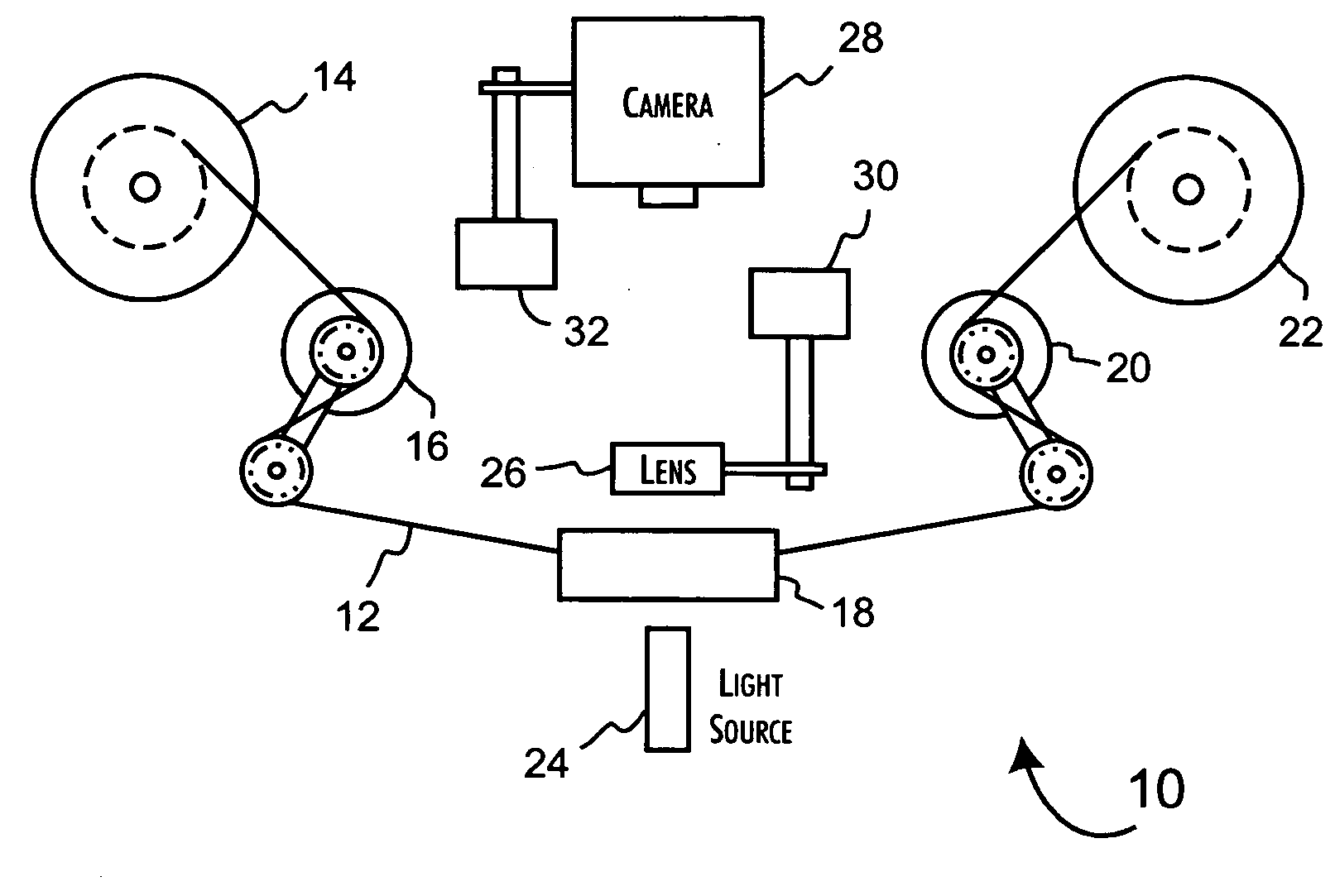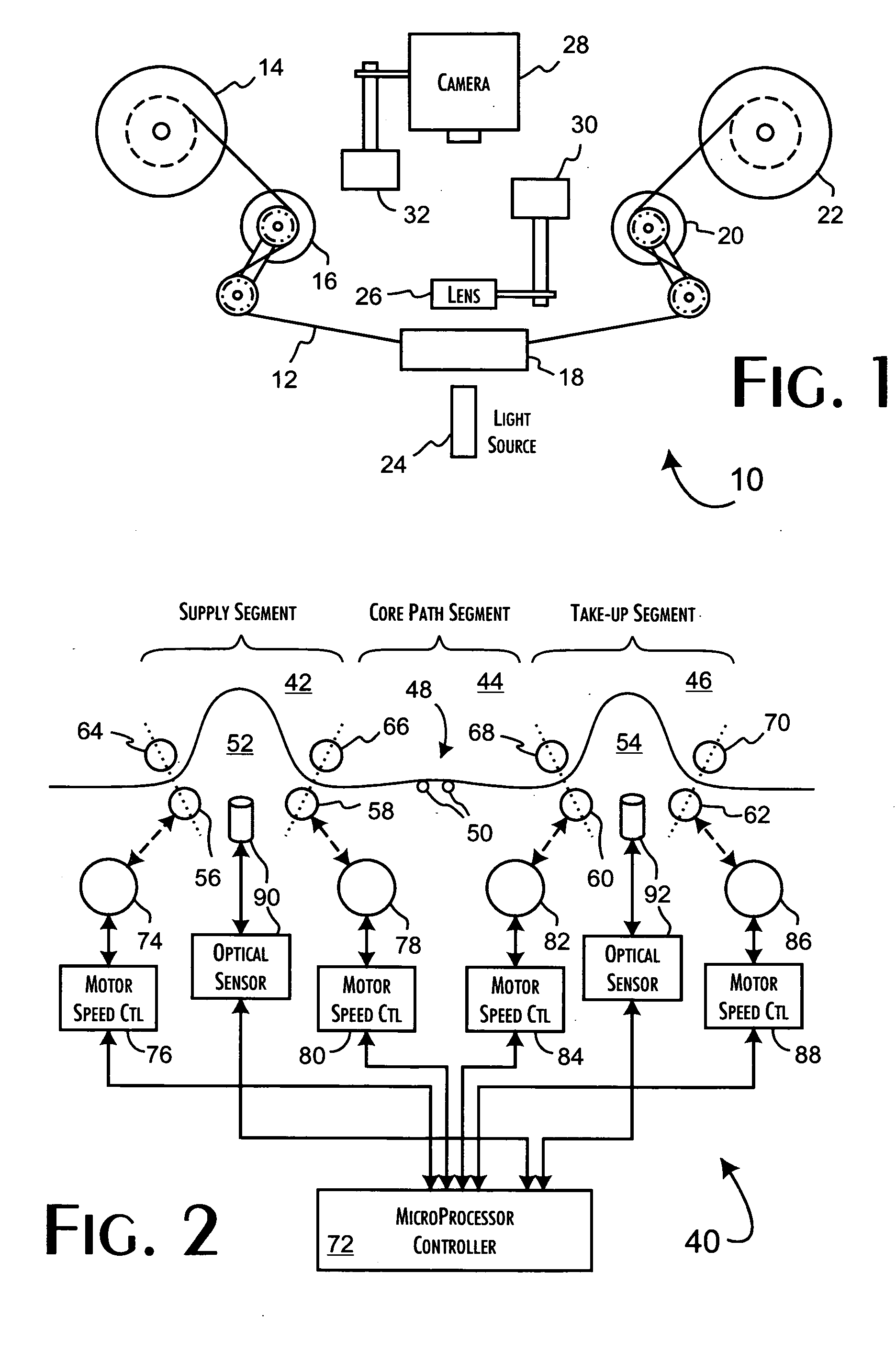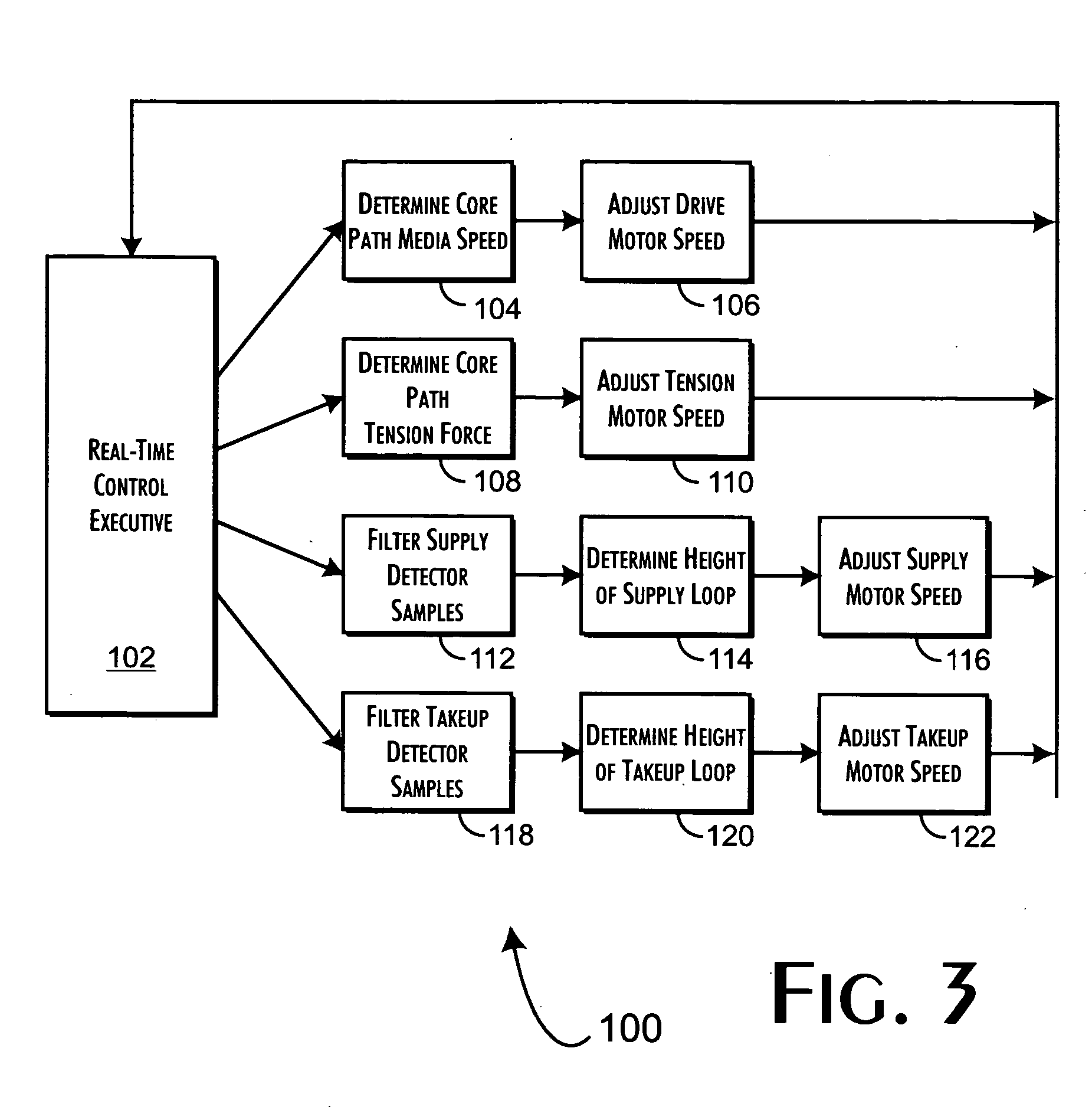High-speed continuous linear film transport system
a transport system and film technology, applied in the field of high-speed, can solve the problems of limiting the useful life of film media, affecting the accuracy of reproduction, and affecting the use of stop-motion systems in many different applications, and achieves the effects of increasing the media transport speed, reducing the loss of image quality, and facilitating establishmen
- Summary
- Abstract
- Description
- Claims
- Application Information
AI Technical Summary
Benefits of technology
Problems solved by technology
Method used
Image
Examples
Embodiment Construction
[0026] The present invention is applicable to the continuous digital line scanning and image conversion of various forms and formats of optical image film media, including motion picture film. The preferred embodiments of the present invention are specifically directed to the accurate, high-throughput image recovery and digitization of documents optically captured on roll microfilm media. The following description of the preferred embodiments should therefore not be construed as limiting the present invention only to roll microfilm use.
[0027] Referring to FIG. 1, an overall view of a microfilm scanner system 10, constructed in accordance with a preferred embodiment of the present invention, is shown. Roll microfilm media 12 is streamed from a supply reel 14, through a supply tensioner system 16, a guide path 18 including a film gate, a take-up tensioner system 20, and collected onto a take-up reel 22. A light source 24 projects a narrow field image from the film media present withi...
PUM
 Login to View More
Login to View More Abstract
Description
Claims
Application Information
 Login to View More
Login to View More - R&D
- Intellectual Property
- Life Sciences
- Materials
- Tech Scout
- Unparalleled Data Quality
- Higher Quality Content
- 60% Fewer Hallucinations
Browse by: Latest US Patents, China's latest patents, Technical Efficacy Thesaurus, Application Domain, Technology Topic, Popular Technical Reports.
© 2025 PatSnap. All rights reserved.Legal|Privacy policy|Modern Slavery Act Transparency Statement|Sitemap|About US| Contact US: help@patsnap.com



